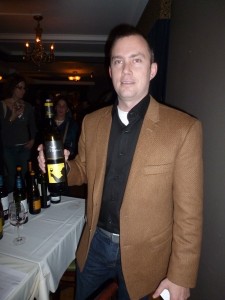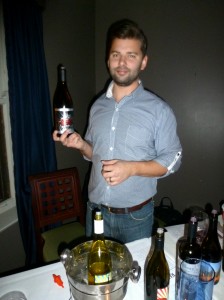The Advantages Of Wine Tastings
Though I don’t do it as often as I’d like, it can be surprisingly easy to go to wine tastings. Many wine shops and liquor stores host them on weekends, and even grocery stores occasionally offer samples. Tastings are a great way to get to know new wines and try things you would never consider buying a whole bottle of. More important, when you try an array of different wines in rapid succession, it becomes much clearer what kinds of wines you most prefer.
My favorite wine shop, In Fine Spirits, offers wine tastings Saturday afternoons, but every once in a while they’ll put together a big wine tasting shebang. Recently, they hosted a wonderful “Rare Vines” event focusing on limited-production wines, an exciting opportunity to try a wide range of wines made in batches of less than 1000 cases (most were under 500).
For just $10 per person — less than the price of a glass of wine in many restaurants — we sampled more than 30 wines and took good advantage of the gourmet cheese tray. (We should have taken better advantage of the spit buckets, however.)
Here are the wines I found most exciting:
2010 Domaine des Herbauges Grolleau Gris (250 cases produced): This was my first taste of a wine made from Grolleau grapes, perhaps because, as I discussed in this previous post, many oenophiles don’t think too highly of this Loire variety. I didn’t find it “thin,” however. It tasted rather citrusy and juicy, with some ripe apple flavors. Not a bad value. ($12.50)
2009 Graziano Chenin Blanc (500 cases): This Mendocino wine had me at “Hello,” with a luscious nose of honey and caramel corn. It started a bit watery on the palate, but the fruit opened up followed by some spiciness. The honey in the aroma reappeared in the satisfying finish. ($16)
2006 Jaume Mesquida Negre (unknown): I was particularly excited to try this wine, a Callet-based blend from the Spanish island of Mallorca. Callet, a variety I’d never tried before, is usually planted as a field blend alongside other varietals, according to The Oxford Companion to Wine. I’m not sure if this organic wine was blended in the field or in the winery, but it certainly tasted good. Dark fruit aromas became big, fruity flavors on the palate, with a big body and an intriguingly bitter, almost medicinal, finish. ($22)
2006 Dominio IV “Song of an Uncaged Bird” Syrah(250 cases): Of this silky, peppery wine, my tasting companion remarked, “Oo, I’ve just wrapped my tongue with a floral print silk scarf.” A pleasant surprise from Oregon, which is better known for its Pinot Noir. ($30)
NV The Shakedown Red Blend (200 cases): I bought only a couple of wines at this tasting, and this Rhone-style blend of Mourvedre, Grenache and Viognier was one of them. Big, fruity and rustic, it’s a fantastic value. ($12.50)
2008 Field Recordings “Chorus Effect” (249 cases): This wine comes with a great story. The young winemaker doesn’t own any vineyards, and apparently he doesn’t even buy any grapes. He gets fruit “on the side,” from “the people and places he values most,” and makes wine as a record of these vineyards and growers. This Bordeaux-style blend tasted very smooth but also spicy, with a big body and hearty tannins. Not inexpensive, but well worth it. ($28-$30)
2009 Sans Liege “The Offering” (970 cases): When Ian poured this Rhone-style blend for us, he noted that this was the wine that inspired him and his business partner to start a wine distribution company called Vinejoy. The winemaker professes to be “equally aligned to the freedoms of the New World and the heritage of the Rhone Valley,” hence “Sans Liege.” His wine did taste awfully good, with deep, dark berries, racy spiciness and a nice big finish. ($28)








Tasting of a wine is a great way to get to know new wines it becomes much clearer what kinds of wines you most prefer.So it is helpful. Keep posting